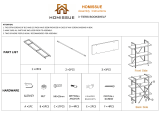
2
The Toro warning system in this manual identifies
potential hazards and has special safety messages that
help you and others avoid personal injury, even death.
DANGER, WARNING and CAUTION are signal
words used to identify the level of hazard. However,
regardless of the hazard, be extremely careful.
DANGER signals an extreme hazard that will cause
serious injury or death if the recommended
precautions are not followed.
WARNING signals a hazard that may cause serious
injury or death if the recommended precautions are
not followed.
CAUTION signals a hazard that may cause minor or
moderate injury if the recommended precautions are
not followed.
Two other words are also used to highlight
information. “Important” calls attention to special
mechanical information and “Note” emphasizes
general information worthy of special attention.
Safety
The
824 POWER SHIFT
SNOWTHROWER meets
or exceeds the Outdoor Power Equipment Institute’
s
safety standards for snowthr
owers; thus, T
or
o pr
oudly
displays the OPEI safety seal. T
o assur
e maximum
safety
, optimum performance, and to gain knowledge
of the pr
oduct, it is essential that you or any other
operator of the snowthr
ower
r
ead and understand the
contents of this manual befor
e the engine is ever
started. Pay particular attention to the safety alert
symbol which
means CAUTION, WARNING OR
DANGER — “personal safety instruction.” Read and
understand the instruction because it has to do with
safety
. Failur
e to comply with instruction may r
esult in
personal injury
.
The following instructions are comparable to the
Instructions For Safe Snowthrowing adopted by the
American National Standards Institute (ANSI). The
snowthrower is designed and tested to offer
reasonably safe service; however, failure to comply
with the following instructions MA
Y RESUL
T IN
PERSONAL INJUR
Y.
Before
Operating
1. Read and understand the contents of this manual
before operating the snowthrower. Become
familiar with all controls and know how to stop
engine and snowthrower quickly.
2. Never allow children to operate the
snowthrower. Adults should operate the
snowthrower only after reading this manual.
3. Keep everyone, especially children and pets,
away from snowthrower and area of operation.
4. Inspect area thoroughly where snowthrower will
be used. Remove doormats, sleds, boards, sticks,
wire, and any other foreign objects which might
be picked up and thrown by the snowthrower.
5. Keep all shields and safety devices in place. If a
shield, safety device or decal is illegible,
damaged or lost, repair or replace it before
beginning operation. Also, tighten any loose
nuts, bolts or screws.
6. Wear adequate winter clothing and rubber boots
that will ensure proper footing on slippery
surfaces. Do not wear loose-fitting clothing that
could possibly get caught in moving parts.
7. Always wear safety glasses or eye shields during
operation or while performing an adjustment or
repair to protect eyes from foreign objects that
may be thrown from the machine.
8. Adjust both skids so auger/impeller housing
clears gravel or crushed rock surfaces.
9. Before starting the engine, move speed shift
control to N (neutral) and ensure that
auger/impeller control and traction (wheel drive)
control are in disengaged position.




















